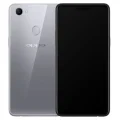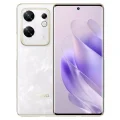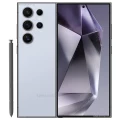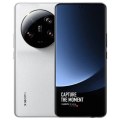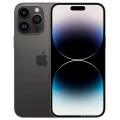- Awesome page
- Latest Mobile
- Smartphones
- OnePlus 10
OnePlus 10
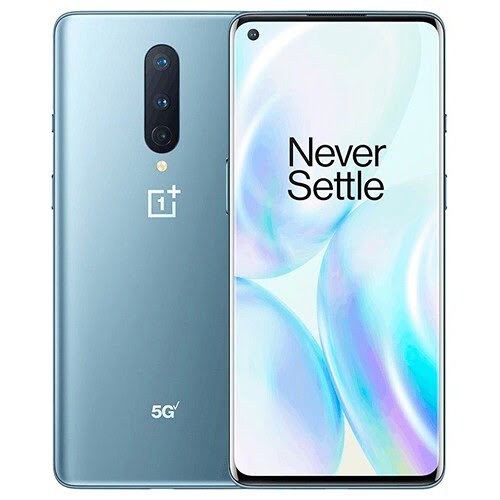


OnePlus 10 Price in Bangladesh
The OnePlus 10 Price in Bangladesh is currently rumored and yet to be officially announced. The OnePlus 10 features a 6.55-inch Fluid AMOLED capacitive touchscreen with a resolution of 1080 x 2400 pixels, offering vibrant colors and a smooth display experience. It is powered by an Octa-core Qualcomm SM8250 Snapdragon 875 (7nm+) processor, ensuring strong performance. Available in 8GB or 12GB of RAM with 128GB or 256GB of internal storage (non-expandable), the device caters to power users. The rear camera setup includes 48MP, 16MP, 5MP, and 2MP sensors, while the front sports a 32MP selfie camera. Additionally, the OnePlus 10 is equipped with a 5000mAh Li-Po battery, providing ample power for extended usage. Stay tuned for the official OnePlus 10 Price in Bangladesh.
Specifications
General
| Model | OnePlus 10 |
| Released | Rumored |
| Status | Coming Soon |
Design
| Colors |
Onyx Black, Glacial Green, Interstellar Glow, Polar Silver |
Network
| Technology | GSM / CDMA / HSPA / LTE / 5G |
| 2G Network |
GSM 850 / 900 / 1800 / 1900 - SIM 1 & SIM 2 CDMA 800 / 1900 & TD-SCDMA |
| 3G Network |
HSDPA 800 / 850 / 900 / 1700(AWS) / 1800 / 1900 / 2100 |
| 4G Network |
LTE |
| 5G Network |
SA/NSA |
| GPRS <strong>GPRS</strong> (General Packet Radio Service) is a packet oriented mobile data service on the 2G and 3G cellular communication system's global system for mobile communications (GSM), Generally, GPRS is used for the purpose of wireless data transfer, such as sharing pictures and videos or browsing the Internet via a mobile phone connection. | |
| EDGE <strong>EDGE</strong> (Enhanced Data GSM Environment) is a wireless network technology generally considered the next step in the 2G network offers data transfer rates up to four times faster than ordinary GSM networks, Generally, EDGE is used for the purpose of wireless data transfer, such as sharing pictures and videos or browsing the Internet via a mobile phone connection. | |
| Speed | HSPA 42.2/5.76 Mbps, LTE-A (5CA) Cat18 1200/150 Mbps, 5G 7.5 Gbps DL |
Display
| Display Type <strong>Display Technology => </strong> A number of display technologies and types used in mobile phones => TFT (Thin Film Transistor), IPS (In-Place Switching), OLED (Organic Light Emitting Diode), AMOLED (Active-Matrix Organic Light-Emitting Diode), Super AMOLED (an even advanced version of AMOLED), Resistive Touchscreen (Resistive touchscreens contain two layer of conductive material with a very small gap between them which acts as a resistance), Capacitive Touchsceen (Capacitive touchscreen technology consists of a layer of glass coated with a transparent conductor) | Fluid AMOLED capacitive touchscreen, 16M colors |
| Size | 6.55 inches |
| Resolution | 1080 x 2400 pixels |
Camera
Main camera
| Camera Setup | Quad |
| Primary <strong>Camera</strong> is able to capture photographs and usually videos, The most important characteristics of a camera are the resolution (measured in megapixels), lens focus type (fixed or automatic), higher megapixel cameras are known to capture higher quality photos, but not always a good measurement of the photos quality. |
48 MP 16 MP 5 MP 2 MP |
| Features |
Dual-LED flash, HDR, panorama |
| Video | 4K@30/60fps, 1080p@30/60/240fps, Auto HDR, gyro-EIS |
Selfie camera
| Camera Setup | Single |
| Primary <strong>Camera</strong> is able to capture photographs and usually videos, The most important characteristics of a camera are the resolution (measured in megapixels), lens focus type (fixed or automatic), higher megapixel cameras are known to capture higher quality photos, but not always a good measurement of the photos quality. |
32 MP |
Hardware
| Chipset <strong>Chipset</strong> is a group of integrated circuits designed to perform one or a more dedicated functions, often with real time computing constraints, Popular smartphones are equipped with more advanced embedded chipsets that can do many different tasks depending on their programming. | Qualcomm SM8250 Snapdragon 875 (7 nm+) |
| RAM (Memory) <strong>RAM</strong> (Random Access Memory) is a type of computer memory that can be accessed randomly, any byte of memory can be accessed without touching the preceding bytes that allows information to be stored and accessed quickly from random locations. RAM is the most common type of memory found in computer systems, smartphones, tablets and other electronic devices. | 8/12 GB |
| Internal Storage <strong>Internal Storage</strong> is a data storage space (flash memory) mostly used in smartphones, tablets and other electronic devices where operating system, apps, music, photos, videos, files and other user data Is stored. | 128/256 GB |
| Sensors <strong>Sensors</strong> are electronic components that detects and responds to some type of input from the physical environment. The specific input could be light, heat, motion, moisture, pressure and location, The output is generally a signal that is converted to use in computing systems, a location sensor, such as a GPS receiver is able to detect current location of your electronic device. |
Fingerprint (under display, optical), accelerometer, gyro, proximity, compass |
Connectivity
| Bluetooth <strong>Bluetooth</strong> is a wireless communications technology for exchanging data between mobile phones, headsets, computers and other network devices over short distances without wires, Bluetooth technology was primarily designed to support simple wireless networking of personal consumer devices. | 5.1, A2DP, LE, aptX HD |
| Infrared <strong>Infrared</strong> connectivity is an old wireless technology used to connect two electronic devices. It uses a beam of infrared light to transmit information and so requires direct line of sight and operates only at close range. | |
| USB | 3.1, Type-C 1.0 reversible connector, USB On-The-Go |
| GPS <strong>GPS</strong> The Global Positioning System is a satellite-based radio navigation system, GPS permits users to determine their position, velocity and the time 24 hours a day, in all weather, anywhere in the world, In order to locate your position, your device or GPS receiver must have a clear view of the sky. | Yes, with dual-band A-GPS, GLONASS, BDS, GALILEO, SBAS |
| NFC <strong>NFC</strong> (Near field communication) is a set of standards for smartphones and similar devices to establish peer-to-peer radio communications with each other by touching them together or bringing them into proximity, usually no more than a few inches. |
Battery
| Battery Type <strong>Battery Type => </strong> Cell phones run on various kinds of batteries depending on the manufacturer, phone size or shape and features. There are basically four types of cell phone batteries => Lithium Polymer, Lithium Ion, Nickel Metal Hydride and Nickel Cadmium. | Non-Removable Li-Po |
| Capacity <strong>Battery Capacity</strong> is a measure (typically in Amp-hr) of the charge stored by the battery, and is determined by the mass of active material contained in the battery. The battery capacity represents the maximum amount of energy that can be extracted from the battery under certain conditions. | 5000 mAh |
Unleashing the Power of OnePlus 10 – A Comprehensive Review for Tech Enthusiasts
In the fast-paced world of smartphones, each year brings a slew of new devices vying for consumer attention. Enter the OnePlus 10, a smartphone that’s been making waves with tech enthusiasts and casual users alike. With promises of high performance, stunning design, and groundbreaking features, it’s positioned itself as a serious contender in the high-end smartphone market. But does it live up to the hype? In this comprehensive review, we’ll explore every aspect of the OnePlus 10 to help you decide if it’s the right choice for you.
OnePlus 10 – A New Contender in the Smartphone Arena
The OnePlus brand has always been synonymous with flagship killers—smartphones that offer top-tier specs at more affordable prices. The OnePlus 10 continues this tradition but aims even higher. Positioned to compete with heavyweights like the Samsung Galaxy S21 and iPhone 13, the OnePlus 10 boasts impressive specs that promise to deliver a seamless user experience.
With increasing competition in the smartphone market, standing out requires more than just good specs. OnePlus has focused on delivering a balanced device that excels in design, performance, and user experience. This review will dissect these elements to give you an in-depth look at what makes the OnePlus 10 tick.
Sleek Design and Build Quality
One of the first things you notice about the OnePlus 10 is its sleek design. The device features a glass front and back with an aluminum frame, giving it a premium feel. The curved edges and slim profile make it comfortable to hold, while the matte finish on the back prevents fingerprints and adds a touch of sophistication.
The display is another highlight. The OnePlus 10 sports a 6.7-inch AMOLED screen with a resolution of 1440 x 3216 pixels. The 120Hz refresh rate ensures smooth scrolling and an immersive viewing experience. Whether you’re watching videos or playing games, the display quality is top-notch, with vibrant colors and deep blacks.
Ergonomics have not been overlooked either. The button placement is intuitive, and the under-display fingerprint sensor is both quick and reliable. Overall, the design and build quality of the OnePlus 10 are impressive, setting a high bar for its competitors.
Performance That Packs a Punch
Performance is where the OnePlus 10 truly shines. Powered by the Qualcomm Snapdragon 8 Gen 1 chipset and up to 12GB of RAM, this smartphone is built for speed. Whether you’re multitasking, gaming, or running demanding applications, the OnePlus 10 handles everything with ease.
Battery life is equally commendable. The 5000mAh battery provides enough juice to last through a full day of heavy use. And when you do need to recharge, the OnePlus 10 supports 80W fast charging, which can get you from 0 to 100% in under 30 minutes. This is a game-changer for users who are always on the go.
For gamers, the OnePlus 10 offers a smooth and lag-free experience. The Adreno 730 GPU ensures high frame rates, even in graphically intensive games. Combined with the 120Hz refresh rate display, it’s a gaming paradise.
Camera Capabilities
The camera setup on the OnePlus 10 is nothing short of impressive. It features a triple-camera system on the back, including a 50MP main sensor, a 48MP ultra-wide lens, and an 8MP telephoto lens. This versatile setup allows for a range of shooting options, from ultra-wide landscapes to detailed close-ups.
Photo quality is excellent, with sharp details and accurate colors. Night mode has also been improved, offering clearer and brighter photos in low-light conditions. The OnePlus 10 also excels in video recording, capable of capturing 8K video at 30fps. The addition of unique shooting modes like Super Macro and Tilt-Shift gives photographers more creative freedom.
The front camera is no slouch either. The 32MP selfie camera captures detailed and vibrant selfies, perfect for social media sharing. Overall, the camera capabilities of the OnePlus 10 make it a strong contender for photography enthusiasts.
User Experience and OxygenOS
OnePlus devices have always been known for their smooth user experience, and the OnePlus 10 is no exception. Running on OxygenOS 12, based on Android 12, the interface is clean, intuitive, and highly customizable. From changing the icon packs to adjusting the always-on display settings, OxygenOS offers a plethora of customization options.
One unique feature is the Zen Mode, which helps users disconnect by limiting phone functionality for a set period. This is particularly useful for those looking to reduce screen time. The software also integrates well with Google services, ensuring a seamless experience for users.
Another standout feature is the enhanced haptic feedback, which adds a tactile dimension to interactions. Whether typing on the keyboard or navigating through menus, the haptics are precise and satisfying. Overall, the user experience on the OnePlus 10 is polished and enjoyable.
Comparing the OnePlus 10 with Competitors
In a crowded market, how does the OnePlus 10 stack up against its rivals? When compared to the Samsung Galaxy S21 and iPhone 13, the OnePlus 10 holds its own in several areas. In terms of performance, the Snapdragon 8 Gen 1 chipset is on par with the Exynos 2100 and A15 Bionic chips found in the Galaxy S21 and iPhone 13, respectively.
The camera capabilities of the OnePlus 10 are also competitive, particularly with the improved night mode and unique shooting modes. However, it’s worth noting that the iPhone 13 still has a slight edge in video quality and color accuracy.
Price-wise, the OnePlus 10 offers excellent value for money. It provides many of the same features and performance capabilities as its more expensive counterparts, making it an attractive option for budget-conscious consumers.
Final Verdict
After a thorough examination, it’s clear that the OnePlus 10 is a formidable player in the smartphone market. With its sleek design, powerful performance, impressive camera capabilities, and user-friendly software, it ticks all the right boxes for tech enthusiasts and everyday users alike.
While it faces stiff competition from the likes of Samsung and Apple, the OnePlus 10 stands out with its unique blend of features and value for money. For those looking to invest in a high-performing smartphone without breaking the bank, the OnePlus 10 is a compelling choice.
Closing Thoughts
The OnePlus 10 offers a lot for its price, making it a smart investment for anyone in need of a new smartphone. Whether you’re a tech enthusiast, a gamer, or someone who just wants a reliable device for everyday use, the OnePlus 10 has something to offer.
We’d love to hear your thoughts on the OnePlus 10. Feel free to share your experiences and any questions you may have in the comments below. And if you enjoyed this review, consider subscribing to stay updated on the latest tech reviews and insights.
































































































